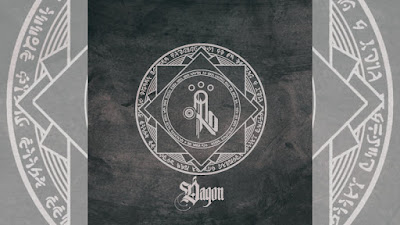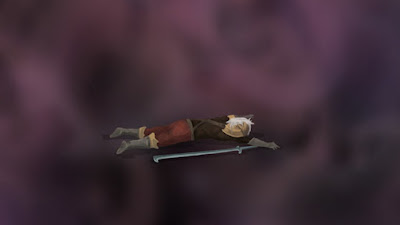Why Slay The Spire Is A
Great Stoic Workout
Written by Casey
Douglass
At a time when gaming
has lost a big chunk of its appeal to me, the one game that has
managed to cut through my indifference is Mega Crit Games’ Slay
The Spire. It’s a great looking, well-designed and fun game,
but on giving it some thought, I also think that it’s a great game
for a practising Stoic. Stoicism is the philosophy that I am trying
to embrace in my daily life, and many elements of Slay The Spire
seem to lend themselves to its practice. In the following post, I
ponder what some of those elements are, how they relate to Stoicism
as I understand it, and why I think that Slay The Spire is a
great Stoic game.
What is Stoicism? +
Would Stoics Even Play Video-games?
Stoicism is a
philosophy that was born in ancient Greece. It values reason and
building character above anything else, and bares little resemblance
to the modern day use of the word ‘stoic’. Stoicism, the
philosophy, aims to help someone develop and make use of wisdom in
everyday life, knowing which things to put their energy into, which
things are actually in their control, and how to greet life’s
challenges when they appear.
Would a Stoic “waste”
their time playing video-games though? If you are looking at a
philosophy, a religion, or any other outlook on life, you’re never
far from questions such as “Would someone who adopts X as a
philosophy do Y?” You’ll find people with zealot-like zeal who
will revel in telling you that doing Y would never be entertained by
people who truly want to adopt the particular view in question.
You'll also find people who let almost anything go, it’s all good!
I think it’s often a matter of personal choice and interpretation,
with elements of situation, duration and motivation thrown in for
good measure.
When it comes to
video-games, I think that there is a world of difference between
someone who obsessively plays video-games their every waking hour,
and someone who dips into them in a measured way for awhile at the
end of a long day. Even when two people play a video-game, their
approach or goals can vary wildly, from the teeth-clenched
rage-quitter who swears at everyone on their team for being a noob
when they lose, to the quiet, patient person who loves solving
strategic puzzles to increase their ability to think under pressure.
If done in moderation and in the right mindset, pass-times and
enjoyments are there to be savoured. Gaming is one of those things,
and it might even be a fine playground for practising Stoic character
traits or virtues, such as wisdom, courage and temperance.
Slay The Spire
 |
| A boss battle in which I can just about survive until the next turn... |
Slay The Spire
is a deck-building rogue-like game where the player guides a chosen
character up a Spire that is filled with various rooms, treasures and
monsters. It is a game in which the player has some control over
events in the choices that they make, but in other ways, are at the
mercy of the randomly generated elements of the game. You might be on
a very promising run up the Spire and, due to a few terrible card
hands, end up dying to a basic mob. You might be on a run in which
everything seems to be going wrong and yet you end up white-knuckling
it through to the final boss. You often don’t know what will happen
next, and that is where the fun is!
Knowing which things
you have control over and which you don’t is one of the key aims of
Stoicism, something Epictetus expressed when he said: “Some things
are up to us and some are not.” If our state of well-being hinges
on things that are not up to us, we end up struggling against reality
and become prone to more negative emotions such as depression and
hopelessness. In his book A Guide to the Good Life, William
Irvine explains that following Epictetus’ teachings turns the usual
way that we think about fulfilling our desires upside down. Rather
than striving for things that we might not attain, the path to a good
life is for us to martial the things that we do have control over,
and that we are certain to achieve. A lot of this comes down to
making our goals internal rather than external.
When it comes to Slay
The Spire, this notion can be illustrated in the following way.
If your goal is to get to the top of the Spire, that is not something
that is wholly in your control. You have no idea which random cards,
relics or bosses you will encounter, even if a thorough knowledge of
the game might stop these from being a shock when they come. What you
do have full control over however, is the goal that you want for
yourself. If you set your goal as “I want to get as far up the
Spire as I can, and not to give up even when things seem hopeless”,
that is a very achievable aim. Even if you die to the first act boss,
if you didn’t give up, you achieved your goal and can feel good
about that.
 |
| You will see this screen a lot... |
This is what I like
about gaming in general, it gives us a chance to put into practise
the character traits that we’d love to cultivate for other areas of
our lives. You might like to add being patient and not letting
frustration get the better of you too. You might not succeed at these
100% of the time, but if they are linked to a wiser overall goal of
“seeing how far you can get”, even these slip-ups won’t feel so
bad.
Something that I
currently struggle with in Slay The Spire is being too hasty
in my turn-taking, often realising that there was another card or
potion that would have made a difference the split-second after I
click the end turn button. Sometimes, I even end my turn and then
notice that I still had enough energy to play one more card! So at
the moment, while seeing how far I can get in each run, my intrinsic
goal is to slow down and to give adequate time to finding solutions.
Another thing that I’m prone to is fixating on a certain card
build, whether or not I actually have the other cards to make it
work. This often happens when a rare card comes into play and I take
it, hoping that others that might support it will turn up later.
Again, another goal is to not be dazzled by what's in front of me, to
the extent that it makes me closed off to other possibilities. Slay
The Spire is full of these little tests, and that’s why I love
it.
The Stoic Test Frame
In another of William
Irvine’s books: The Stoic Challenge, Irvine explains the
value in meeting life’s obstacles and set-backs as a test from the
Stoic gods. While you don’t need to believe in said gods, viewing
things in this manner, as a challenge, can take some of the sting out
of setbacks, and even add some fun into something that previously,
you might have been despairing about. Irvine explains that a true
setback has the element of surprise about it, but the ancient Stoics
also engaged in toughness training, a process in which they
deliberately put themselves into uncomfortable situations, in the
hope of better dealing with setbacks when they popped up in other
areas of life. Slay The Spire seems to have elements that are
fitting for each approach, especially if you purposefully take the
harder path or choice when the game presents you with one.
 |
| Which path to take? |
A Slay The Spire
setback that you have little control over might be that you are
low in health and you decide to click on a mystery encounter, trying
to avoid the certain monster fight that is your only other option.
Once inside the room, you not only find that there are monsters
inside, but that you are in a boss battle that you have no way of
escaping. You die two turns later. You could rage and hiss your
annoyance at the “stupid game”, and not learn anything from the
experience. Or, you could notice the irritation that you feel,
realise how unwarranted it is, and maybe even give a silent nod to
the developers for crafting something so tricky and challenging. Your
irritation is in response to something that you couldn’t control,
and in realising this, you might give yourself a mental pat on the
back as you chalk it up to experience. You might even feel pleased
that you didn’t fuel your irritation until it blew up and ruined
the rest of your gaming session. Same event, two different outlooks.
Video games seem to be
the perfect arena to practise the Stoic Test Frame. After all, you
already know that you’re playing a game, except in this instance,
you are pitting yourself against the developer, possibly other human
players, and, as in other areas of life, yourself. You only have to
watch gaming content on YouTube or Twitch to see how games affect
some players. There is a reason that the words “Rage” and “Tilt”
and “Toxic” in video titles draw lots of clicks. If you want to
see how to fail at building character, watch those videos. If you
find that rare individual who seems to take setbacks in their stride
with a smile and a more tranquil demeanour, enjoy their content and
see how they frame things. You will more than likely find someone who
loves rising to a challenge and who is also skilled at taking the
sting out of what is happening by framing things in a beneficial way.
If you want to engage
in some Stoic toughness training, you might even try playing Slay
The Spire in a way that rubs against what you’d usually like to
do. If you always grab certain cards or relics when they appear, you
might like to have a run where you take cards or relics that you
despise, or that go against your usual play style. If you prefer to
keep your card-deck small, you might like to try accepting a card
every time one is offered, letting you see what it is like to play
with a massive assortment of cards. If you always avoid certain
encounters or choices, forcing yourself to take them can be a
wonderful way to learn something, and at the least, to get practise
with some of the character traits that you want to nurture inside
yourself. A video-game is the ideal, low-stakes place to try these
kinds of experiments.
 |
| The shop in which many a build died due to temptation. |
In Conclusion
I hope that I’ve done
justice to the title of this post and have adequately explained why I
find Slay The Spire to be so captivating. I’m sure that you
can apply Stoic ideas to any game that you might play, but there is
something about the turn-based, semi-random nature of Slay The
Spire that seems conducive to having the space to breathe and to
grow a little each time that you play it.
If you’d like to look
into Stoicism a little more, you might like to read my review of
William Irvine’s The Stoic Challenge, which is a book I very
much recommend. I also recommend Donald Robertson’s How To Think Like A Roman Emperor, which illustrates many Stoic notions by
depicting the life of Marcus Aurelius.







